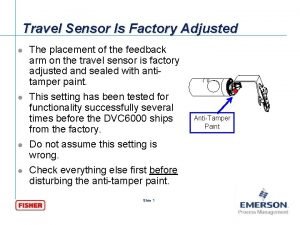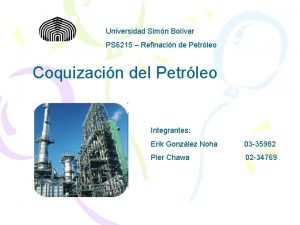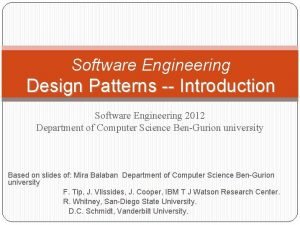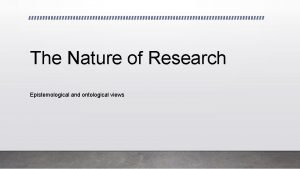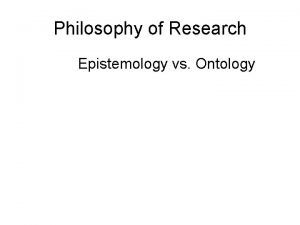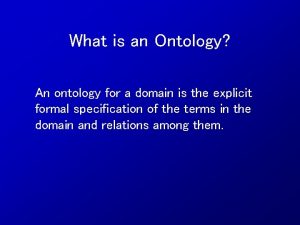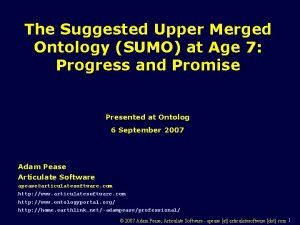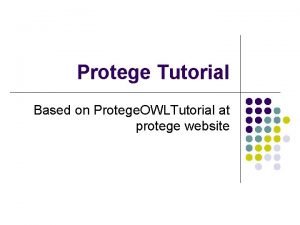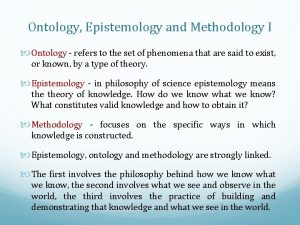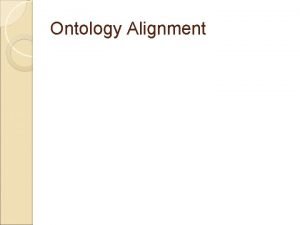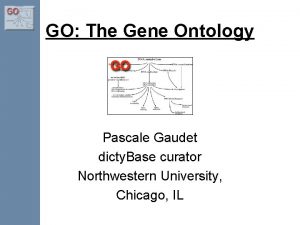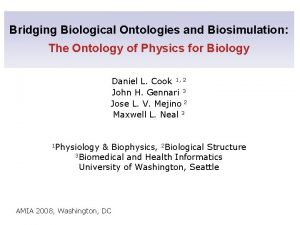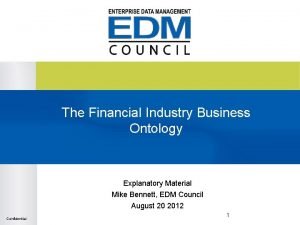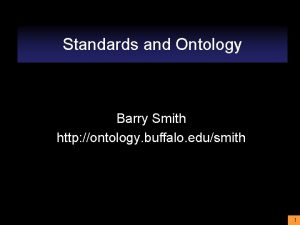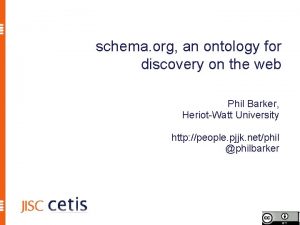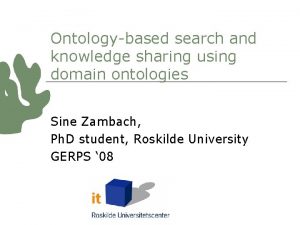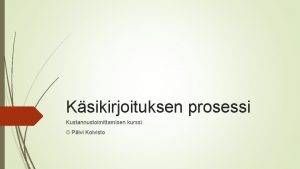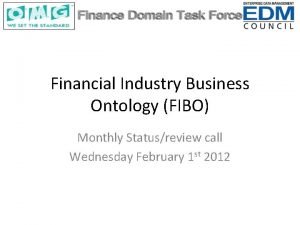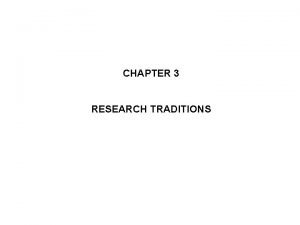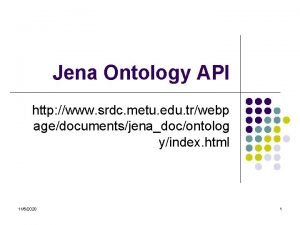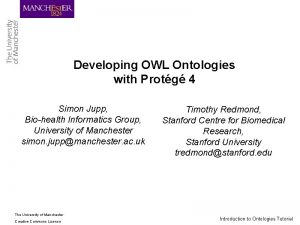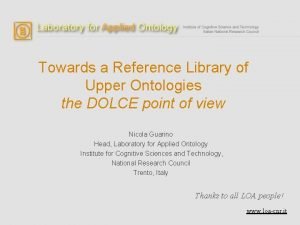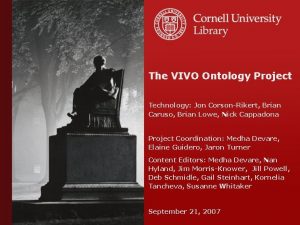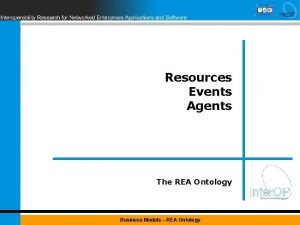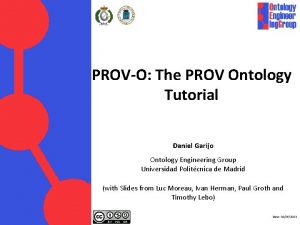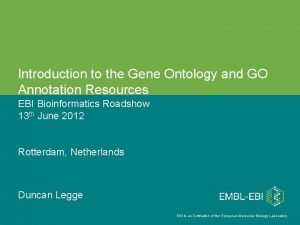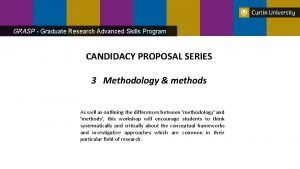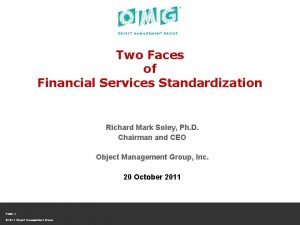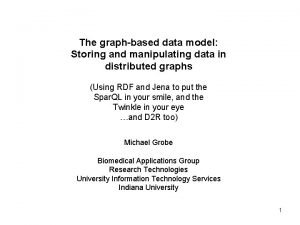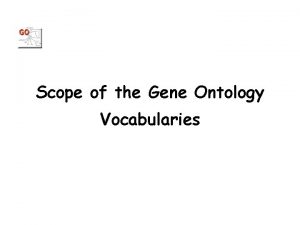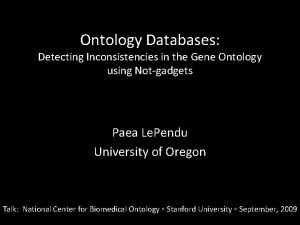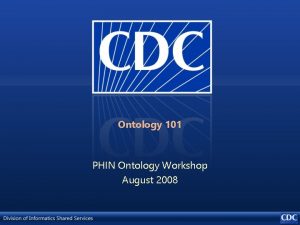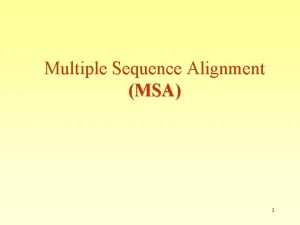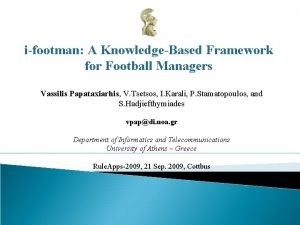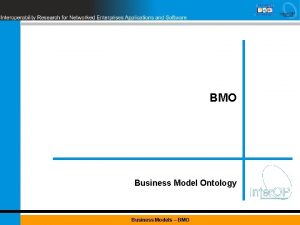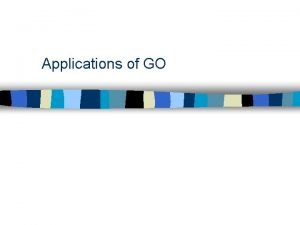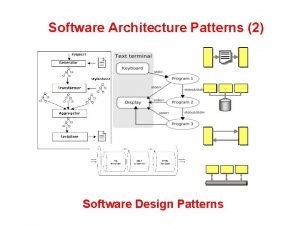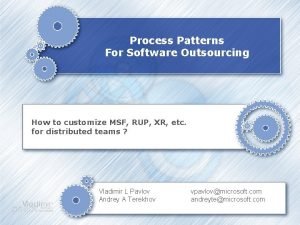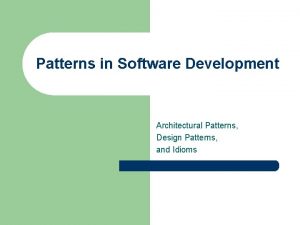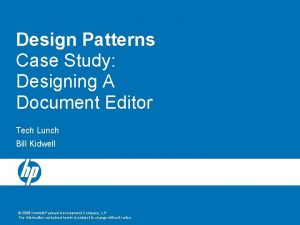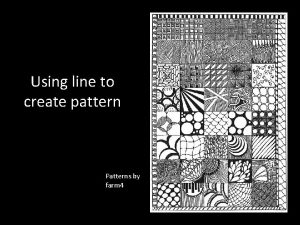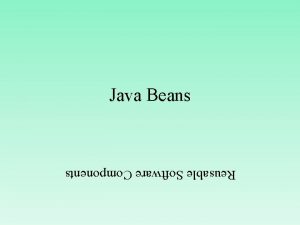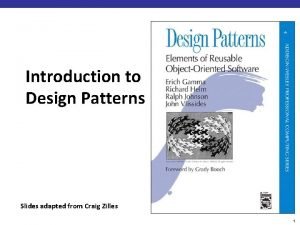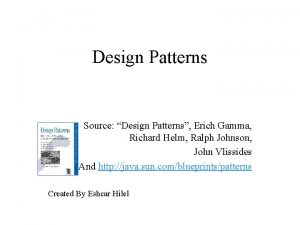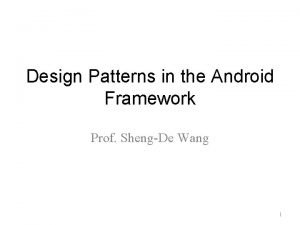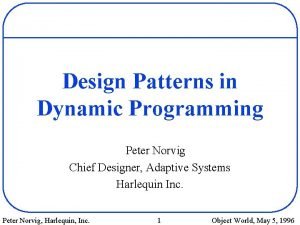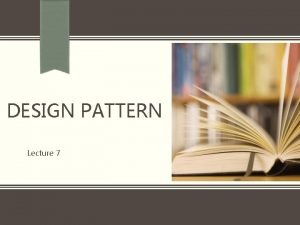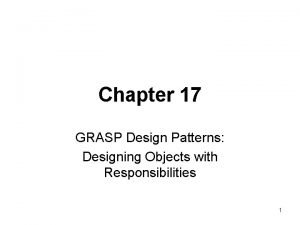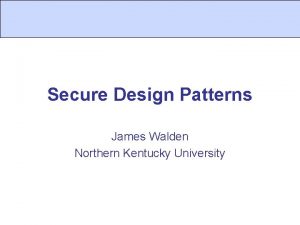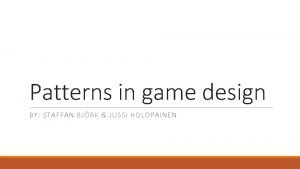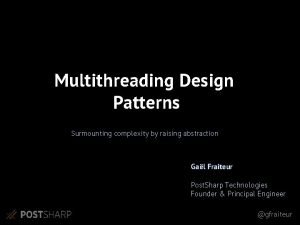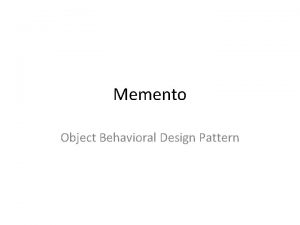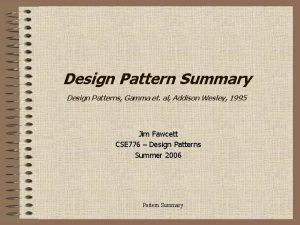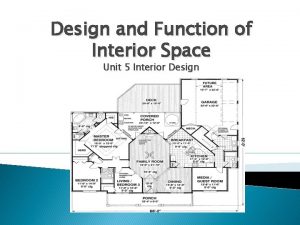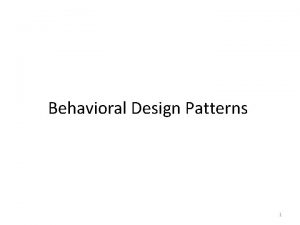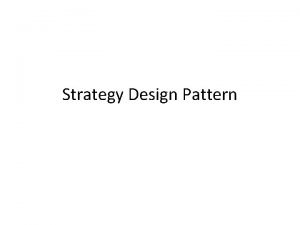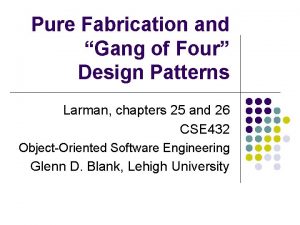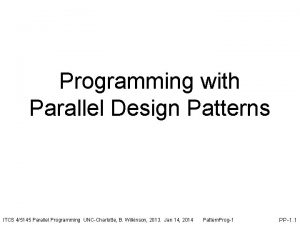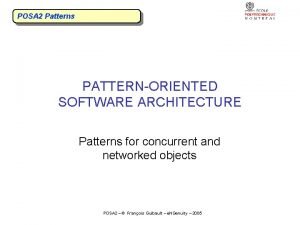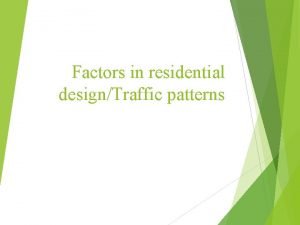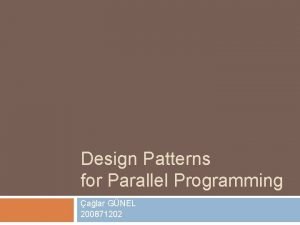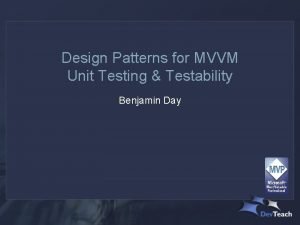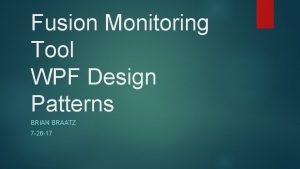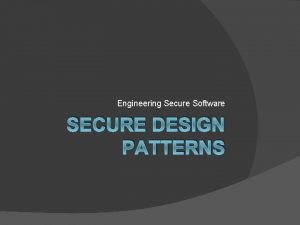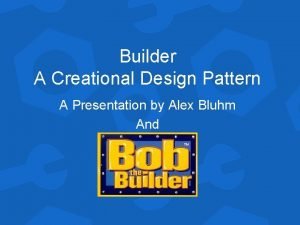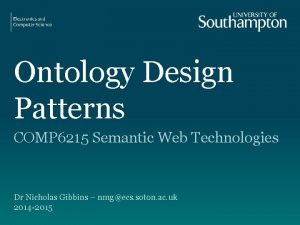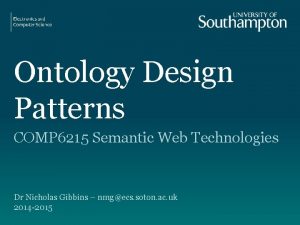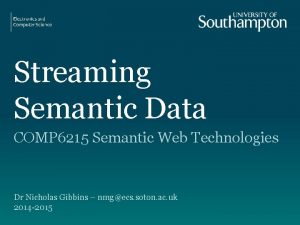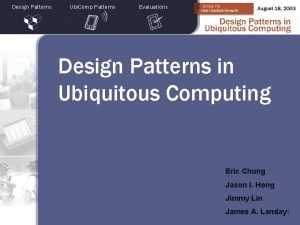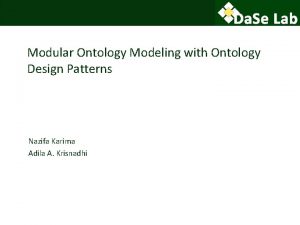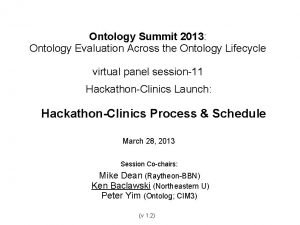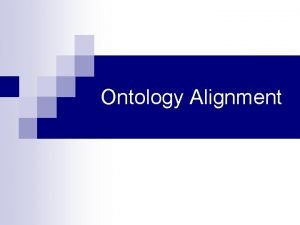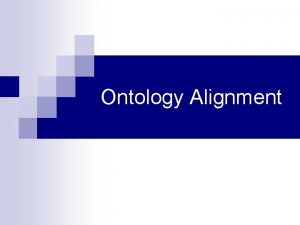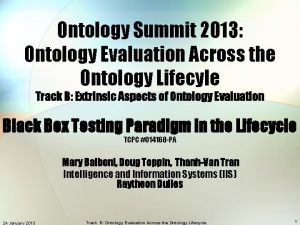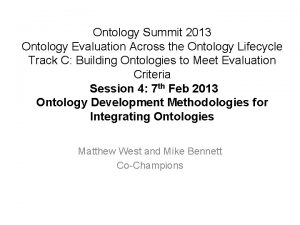Ontology Engineering and Design Patterns COMP 6215 Semantic













































































- Slides: 77


Ontology Engineering and Design Patterns COMP 6215 Semantic Web Technologies Dr Nicholas Gibbins - nmg@ecs. soton. ac. uk

Ontologies “a formal, explicit specification of a shared conceptualisation” (Gruber) https: //userpages. uni-koblenz. de/~staab/Research/Publications/2009/handbook. Edition 2/what-is-an-ontology. pdf 3

Ontologies Machine understandable ontology should represent a shared view of the domain “a formal, explicit specification of a shared conceptualisation” (Gruber) Representation of concepts and constraints is explicitly defined modelling the concepts and relations of the domain https: //userpages. uni-koblenz. de/~staab/Research/Publications/2009/handbook. Edition 2/what-is-an-ontology. pdf 4

Ontologies Machine understandable ontology should represent a shared view of the domain “a formal, explicit specification of a shared conceptualisation” (Gruber) Representation of concepts and constraints is explicitly defined modelling the concepts and relations of the domain The combination of concepts and relationships required to model a knowledge domain in a human and machine understandable format https: //userpages. uni-koblenz. de/~staab/Research/Publications/2009/handbook. Edition 2/what-is-an-ontology. pdf 5

Type of Ontologies There are four main types of ontologies: • • Representation ontologies General or upper-level ontologies Domain ontologies Application ontologies 6

Representation ontologies Describe low level primitive representations • Such as semantic web languages Example ontologies: • OWL, RDFS Usual size: small, a few dozens of concepts and relations 7

Upper-level ontologies Describe high-level, abstract, concepts Examples: Usually domain independent • DOLCE (small upper level ontology) Sometimes part of broad ontologies • Cyc: commonsense ontology • Can be used as part of other ontologies • Hundreds of thousands of concepts • Word. Net: English lexicon • Over 150 K concepts • SUMO: Suggested Upper Merged Ontology • Around 10 K concepts 8

Example: A (tiny) fragment of Cyc 9

Domain ontologies Describe a particular domain extensively Examples: Domain dependent by definition • GO: Gene Ontology • Roughly 25 K concepts • CIDOC CRM: cultural heritage • Roughly 100 concepts • FMA: Foundational Model of Anatomy • Around 75 K concepts 10

Example: CRM Ontology 11

Application ontologies Mainly designed to answer to the needs of a particular application Scaled and focused to fit the application domain requirements Examples: • FOAF: Friend of a Friend ontology • about a dozen concepts • ESWC 06: for conference metadata • about 80 concepts, including FOAF 12

Ontology Building Methodologies

Ontology Building Methodologies No standard methodology for ontology construction There a number of methodologies and best practices The following life cycle stages are usually shared by the methodologies: • • • Specification - scope and purpose Conceptualisation - determining the concepts and relations Formalisation - axioms, restrictions Implementation - using some ontology editing tool Evaluation - measure how well you did Documentation - document what you did 14

Specification Specifying the ontology’s purpose and scope • Why are you building this ontology? • What will this ontology be used for? • What is the domain of interest? • An ontology for car sales probably doesn't need to know much about types and prices of engine oil • How much detail do you need? 15

Specification: Competency Questions What are the questions you need the ontology to answer? • These are competency questions • Make a list of such questions and use as a check list when designing the ontology • Helps to define scope, level of detail, evaluation, etc. 16

Specification: Competency Questions The questions that you REALLY need • You probably don’t need to worry about the questions that “perhaps someone might need to ask someday” The questions that CAN BE answered • Can you get the necessary data to answer those questions? • Permanent lack of some data may render parts of the ontology useless! 17

Conceptualisation Identify the concepts to include in your ontology, and how they relate to each other • Depends on your defined scope and competency questions • Define unambiguous names and descriptions for classes and properties (more on this in Documentation) • Reach agreement (the hard part!) The best tool to use: 18

Conceptualisation Start with pen and paper, diagramming software (e. g. Visio, Mind Maps), or cards/postit notes 19

Conceptualisation: Reuse Ontologies are meant to be reusable! • Technology for reusing ontologies is still limited Always a good idea to check any existing models or ontologies • Check your database models or off-the-shelf ontologies Check existing ontologies • No need to reinvent the wheel, unless it is easier to do so! • Ontology search engines • Swoogle, Watson, lodlaundromat 20

What can you reuse? • Databases • Vocabularies • Ontologies • Some much re-used ontologies • For describing persons: FOAF • For describing documents: Dublin Core • For describing social media: SIOC • For describing vocabulary hierarchies: SKOS • For describing e-commerce: Good Relations • For Web metadata: schema. org • . . . 21

Formalisation • Moving from a list of concepts to a formal model • Define the hierarchy of concepts and relations • Also note down any restrictions • E. g. Non. Profit. Org is. Disjoint from Profit. Org • An email address is unique 22

Formalisation: Building the Class Hierarchy Top-down • Start with the most general classes and finish with the most detailed classes Bottom-up • Start with the most detailed classes and finish with the most general ones Middle-out • Start with the most obvious classes • Group as required • Then go upwards and downwards to the more general and more detailed classes respectively • Good for controlling scope and detail 23

Formalisation: Middle-Out Approach Staff Student University 24

Formalisation: Middle-Out Approach Person Staff Research Staff Teaching Staff Organisation Student Undergrad Student University Postgrad Student 25

Formalisation: Middle-Out Approach affiliated. To Person Organisation works. At Staff Research Staff Teaching Staff Student Undergrad Student studies. At University Postgrad Student 26

Formalisation: Naming Conventions • Not rules, but conventions • Avoid spaces and uncommon delimiters in class and relation names • E. g. use Pet. Food or Pet_Food instead of Pet Food or Pet*Food • Capitalise each word in a class name • E. g. Pet. Food instead of Petfood or even petfood • Start names of relations with a lowercase letter • E. g. pet_owner, pet. Owner • Use singular nouns for classes • E. g. Pet, Person, Shop 27

Formalisation: Class or Relation? Is it a class or a relation? Student type of study Student Full Time Student Part Time Student Full time Part time It depends! If the subclass doesn’t need any new relations (or restrictions), then consider making it a relation 28

Formalisation: Class or Instance? Is it a class or an instance? University Student rdf: type John Smith studies. At Uni of Soton • If it can have its own instances, then it should be a class • If it can have its own subclasses, then it should be a class 29

Formalisation: Transitivity of Class Hierarchy sub. Class. Of relation is always transitive • Car is a subclass of Vehicle • Vehicle is a subclass of Transportation. Object • Any instance of Car is also a Transportation. Object rdfs: sub. Class. Of Vehicle rdfs: sub. Class. Of Car sub. Class. Of is not the same as “part of” • (see meronymy pattern later this lecture) Car part. Of Wheel 30

Formalisation: Tidy Your Hierarchy Avoid sub. Class. Of clutter! • Break down your hierarchy further if you have too many direct subclasses of a class Staff Administrator Technician Research Fellow Senior Lecturer Senior RF Lecturer Res. Assistant Professor 31

Formalisation: Tidy Your Hierarchy Avoid sub. Class. Of clutter! • Break down your hierarchy further if you have too many direct subclasses of a class Staff Administrator Technician Academic Lecturer Research Fellow Senior Lecturer Res. Assistant Senior RF Professor 32

Formalisation: Where to Point my Relation? Relations should point to the most general class • But not too general • e. g relations pointing to Thing! • And not too specific • e. g. relations pointing to the bottom of the hierarchy As a rule of thumb, if the domain or range of a relation is a disjunction (union) of classes, some refactoring is probably required 33

Formalisation: Where to Point my Relation? works for Staff Administrator Technician Researcher Academic teaches Module Lecturer Research Fellow Res. Assistant Senior RF University Senior Lecturer Professor 34

Formalisation: Where to Point my Relation? works for Staff Administrator Technician Academic Researcher Research Fellow Senior RF University teaches Module Lecturer Senior Lecturer Res. Assistant Professor 35

Implementation • Choose a language • e. g. RDFS, OWL. . . • Implement it with an ontology editor • e. g. Protégé, SWOOP, Top. Quadrant • Edit the class hierarchy • Add relationships • Add restrictions • Select appropriate value types, cardinality, etc • Use a reasoner to check the consistency of your ontology • e. g. Racer, Pellet, Fact++, Hermi. T • Best to do this as you go along – easier to trace bugs in your modelling 36

Evaluation: Verification Is your ontology correct? • Is it syntactically correct? • Is it consistent? Implementing the ontology in an ontology editor helps to get the syntax correct Using a reasoner helps you check that it’s consistent You can also validate your OWL ontology online: • http: //visualdataweb. de/validator/ 37

Evaluation: Validation Does your ontology successfully do what you set out to do? Check the ontology against your competency questions • Write the questions in SPARQL or in similar query languages • Can you get the answers you need? • Is it quick enough? • Add additional properties or restructure the ontology to increase efficiency? 38

Documentation Documenting the design and implementation rational is crucial for future usability and understanding of the ontology • Rational, design options, assumptions, decisions, examples, etc. Structured documentation may clarify these assumptions Douglas Skuce proposed a convention for structured documentation of ontological assumptions in 1995 • Conceptual assumptions (C) (long definition, comparing with other classes/properties) • Terminological assumptions (T) (alternative terms used) • Definitional assumption (D) (short definition) • Examples (E) 39

Structured documentation Instead of putting C/T/D/E into a single rdfs: comment, structure the metadata using appropriate properties from RDFS and SKOS (import SKOS into your ontology) Conceptual assumptions (C) • skos: scope. Note, rdfs: comment Terminological assumptions (T) • skos: pref. Label, skos: alt. Label, rdfs: label Definitional assumptions (D) • skos: definition Examples (E) • skos: example Use rdfs: is. Defined. By to indicate if definition is taken from an external source 40

41

Summary Ontology construction is an iterative process • Build ontology, try to use it, fix errors, extend, use again, and repeat There is no single correct model for your domain • The same domain may be modelled in several ways Following best practices helps to build good ontologies • Well scoped, documented, structured Reuse existing ontologies if possible • Check your database models and existing ontologies • Reuse or learn from existing representations • (most ontology editing tools don’t yet provide good support for reuse) 42

Common Pitfalls Over scaling and complicating your ontology • Need to learn when to stop expanding the ontology Lack of documentation • For the design rationale, vocabulary and structure decisions, intended use, etc. Redundancy • Increase chances of inconsistencies and maintenance cost Using ambiguous terminology • Others might misinterpret your ontology • Mapping to other ontologies will be more difficult 43

Ontology Design Patterns

Design Patterns are general, reusable solution to commonly occurring problems • Concept originated with Christopher Alexander’s work on architecture • Popularised in software engineering by the “gang of four” • Subject of study by the knowledge engineering community 45

Design Patterns for the Semantic Web N-ary relations • How can we say more about a relation instance? • How do we represent an ordered sequence of relations? Value partitions and value sets • How do we represent a fixed list of values? Part-whole hierarchies • How do we represent hierarchies other than the subclass hierarchy? 46

N-ary Relations

Binary Relations In RDF and OWL, binary relations link two individuals, or an individual and a value Holbein the Elder birth. Year 1460 father. Of Holbein the Younger The properties birth. Year and father. Of are binary relations 48

Relations with Additional Information In some cases, we need to associate additional info with a binary relation • e. g. certainty, strength, dates For example, Holbein the Elder’s date of birth is unconfirmed • He was born in either 1460 or 1465 • How can we represent this uncertainty? 0. 6 certainty birth. Year 1460 certainty birth. Year 1465 Holbein the Elder 0. 4 49

N-ary Relations N-ary relations link an individual to more than a one value Possible use cases: 1. A relation needs additional info e. g. a relation with a rating value 2. Two binary relations are related to each other e. g. body_temp (high, normal, low), and trend (rising, falling) 3. A relation between several individuals e. g. someone buys a book from a bookstore 4. Linking from, or to, an ordered list of individuals e. g. an airline flight visiting a sequence of airports 50

N-ary Relation Patterns Pattern 1: Reified relation • Use for cases 1, 2, and 3 above Pattern 2: Sequence of arguments • For case 4 51

Pattern 1: Reified Relation To represent additional information about a relation: • Create a new class to represent the relation • Individuals of this class are instances of the relation • Relation class can have additional properties to describe more information about the relation 52

Use case 1: additional information Jack has given the film ‘I Am Legend’ a four-star rating • We need to represent a quantitative value to describe the rating relation Film I am Legend Person film Jack film_rating Rating 8/10 53

Solution for use case 1 I am Legend rated_object Jack issued_rating _: Rating_1 rating 8 b. Node Film rated_object (some. Values. From, functional) Person issued_rating (all. Values. From) Rating_Relation rating_value (all. Values. From, functional) Rating 54

Use case 2: different aspects of a relation Steve has a temperature which is high, but falling • We need to represent different aspects of the temperature that Steve has Source: W 3 C 55

Use case 3: no distinguished participant John buys a “Lenny the Lion” book from books. example. com for $15 as a birthday gift • No distinguished subject for the relation • i. e. no primary relation to convert into a Relation Class as in cases 1 and 2 Source: W 3 C 56

Solution for use case 3 57

Pattern 2: Sequence of arguments United Airlines, flight 1377 visits the following airports: LAX, DFW, and JFK • For such an example, we need to represent a sequence of arguments 58

Pattern 2: Sequence of arguments : Final. Flight. Segment a owl: Class ; rdfs: comment "The last flight segment has no next_segment"; rdfs: sub. Class. Of : Flight. Segment ; rdfs: sub. Class. Of [ a owl: Restriction ; owl: max. Cardinality "0"; owl: on. Property : next_segment]. 59

Value Partitions and Value Sets

Descriptive Features Descriptive features are quite common in ontologies: • Size = {small, medium, large} • Risk = {dangerous, risky, safe} • Health status = {good health, medium health, poor health} Also called “qualities”, “modifiers” and “attributes” • A property can have only one value for each feature to ensure consistency Three main approaches: • Enumerated individuals (a value set) • Disjoint classes (a value partition) • Datatype values (not considered in this lecture) 61

Value Sets Values of descriptive feature are individuals 62

Value Sets • 63

Notes on Value Sets Need axioms to set the three health values to be different from each other • This way, a person cannot have more than one health value at a time Values cannot be further partitioned • e. g. cannot have fairly_good_health as a subtype of good_health Only one set of values is allowed for a feature • The class Health. Value cannot be equivalent to more than one set of distinct values • Doing so will cause inconsistencies 64

Value Partitions Values of descriptive features are disjoint subclasses: 65

Value Partitions • 66

Value Partitions The instance Johns. Health can be made anonymous 67

Notes on Value Partitions • 68

Part-Whole Hierarchies

Meronymies (part-whole relations) Taxonomies are not the only hierarchical relation that we wish to model • A spark plug isn’t a kind of engine (class-instance) • A spark plug is a part of an engine 70

Simple Part-Whole Representation • 71

Part-Whole Hierarchies • 72

Defining Classes of Parts • 73

Fault Location • 74

Fault Location • 75

Further Reading

SWBP Notes Defining N-ary Relations on the Semantic Web http: //www. w 3. org/TR/swbp-n-ary. Relations Representing Specified Values in OWL http: //www. w 3. org/TR/swbp-specified-values Simple part-whole relations in OWL Ontologies http: //www. w 3. org/2001/sw/Best. Practices/OEP/Simple. Part. Whole/ 77
 Dvc 6215
Dvc 6215 Schneider multi touch pro
Schneider multi touch pro Ps 6215
Ps 6215 Design patterns software engineering
Design patterns software engineering X videos
X videos How to identify epistemology in research
How to identify epistemology in research Objectivism ontology
Objectivism ontology Ontology, epistemology, axiology
Ontology, epistemology, axiology Contemporary dating patterns are formal patterns
Contemporary dating patterns are formal patterns What is an ontology
What is an ontology Suggested upper merged ontology
Suggested upper merged ontology Protege owl tutorial
Protege owl tutorial Ontology epistemology methodology
Ontology epistemology methodology Ontology alignment
Ontology alignment Types of ontology
Types of ontology What is meant by gene ontology?
What is meant by gene ontology? Ontology in biology
Ontology in biology Financial industry business ontology
Financial industry business ontology Barry smith buffalo
Barry smith buffalo Schema .org
Schema .org Basic formal ontology
Basic formal ontology Ontology kurssi
Ontology kurssi Business ontology
Business ontology Ontology vs epistemology vs methodology
Ontology vs epistemology vs methodology Ontology editors
Ontology editors Ontology creation
Ontology creation Jena ontology
Jena ontology Pizza ontology
Pizza ontology Dolce ontology
Dolce ontology Vivo ontology
Vivo ontology Resources events agents
Resources events agents Provo ontology
Provo ontology Ontology alignment
Ontology alignment Gene ontology
Gene ontology Ontology meaning
Ontology meaning Business ontology
Business ontology Ontology rdf
Ontology rdf Gene ontology project
Gene ontology project Ontology
Ontology Ontology 101
Ontology 101 Ontology schema
Ontology schema Ontology alignment
Ontology alignment Football ontology
Football ontology Business model ontology
Business model ontology Gene ontology project
Gene ontology project Architectural patterns in software engineering
Architectural patterns in software engineering Process patterns in software engineering
Process patterns in software engineering Architectural patterns in software engineering
Architectural patterns in software engineering Responsibilities of windows class in lexi's document are
Responsibilities of windows class in lexi's document are Forward engineering and reverse engineering
Forward engineering and reverse engineering Make a pattern using lines
Make a pattern using lines Reusable components in java
Reusable components in java Design patterns slides
Design patterns slides Hackerspace design patterns
Hackerspace design patterns Erich gamma
Erich gamma Android design patterns
Android design patterns Peter norvig design patterns
Peter norvig design patterns Design patterns structural
Design patterns structural Grasp patterns examples
Grasp patterns examples Secure design patterns
Secure design patterns Patterns in game design
Patterns in game design Multithreading design patterns
Multithreading design patterns Behavioral design patterns
Behavioral design patterns Hci patterns
Hci patterns Design pattern gamma
Design pattern gamma Guest circulation pattern
Guest circulation pattern Behavioral pattern types
Behavioral pattern types Strategy declares an interface common to all
Strategy declares an interface common to all Pure fabrication in grasp example
Pure fabrication in grasp example Parallel design patterns
Parallel design patterns Posa2
Posa2 Traffic patterns interior design
Traffic patterns interior design Parallel design patterns
Parallel design patterns Unit test design patterns
Unit test design patterns Good decorative design
Good decorative design Wpf design patterns
Wpf design patterns Secure design patterns
Secure design patterns Creational design pattern
Creational design pattern
